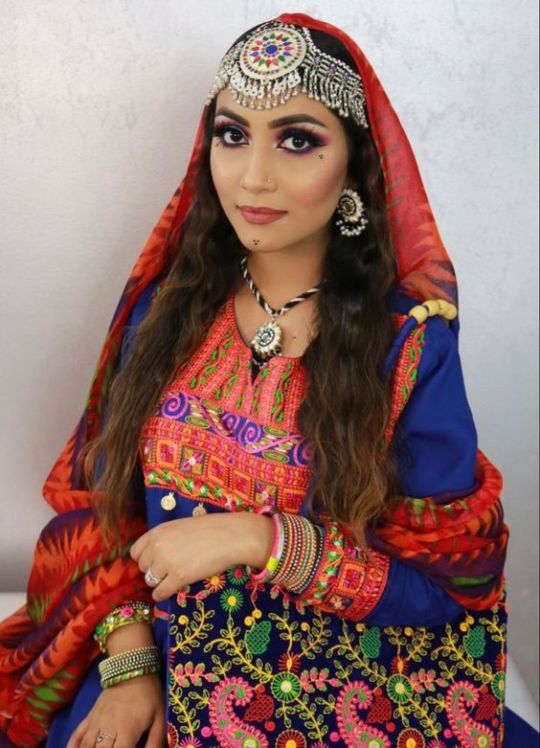#pakistani attire
Text

#sherwani#pakistan#pakistani outfit#pakistani costume#pakistani attire#pakistani fashion#india#indian#indian fashion#indian folk#indian costume#indian culture#indian attire#indian outfit#southeast asia#asian#man's fashion#man fashion#asian folk#asian fashion#asian costume#asian culture#asian outfit#asian attire#asian folk costume#pakistani culture#pakistani folk#शेरवानी
73 notes
·
View notes
Text
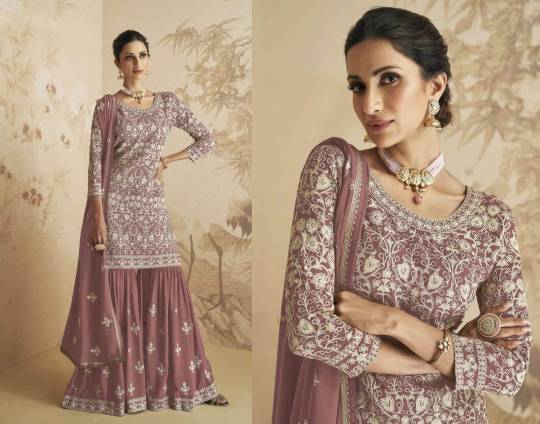
The top and bottom are made of faux georgette with chain stitch work and sequins. It comes with a santoon inner and a dupatta made of faux georgette with chain stitch work and sequins with four side lace around it.
It can be stitched in all sizes small medium large and extra large. Minimum 28 inches to maximum 44 inches chest size.
0 notes
Text
Faiza Saqlain Nira Wedding Luxury Dresses 2023 For Women
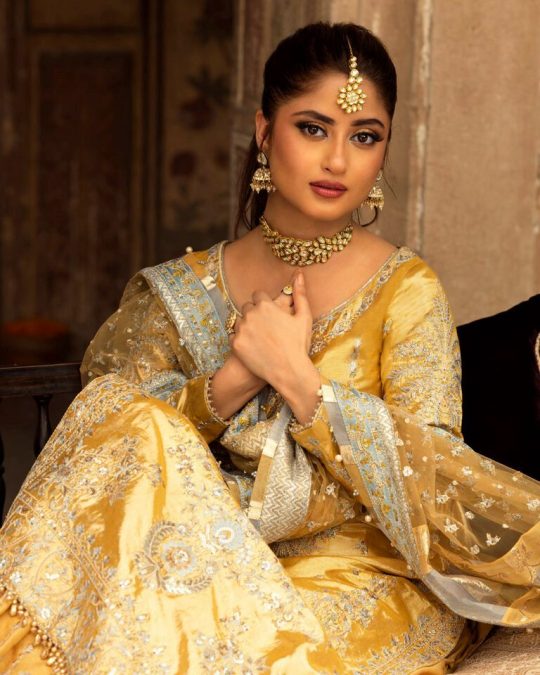
View On WordPress
#Bridal Attire#Bridal Couture#color palette#Contemporary Aesthetics#Cultural heritage#EMBROIDERY#Faiza Saqlain#Lehengas#Luxury fashion#Modern Elegance#Nira Collection#Opulence#Pakistani Designer#Pakistani Fashion#Shararas#Silk and Velvet#Sophistication#Timeless Beauty#Traditional Crafts#wedding dresses
0 notes
Text
Faiza Saqlain Nira Wedding Luxury Dresses 2023 For Women

View On WordPress
#Bridal Attire#Bridal Couture#color palette#Contemporary Aesthetics#Cultural heritage#EMBROIDERY#Faiza Saqlain#Lehengas#Luxury fashion#Modern Elegance#Nira Collection#Opulence#Pakistani Designer#Pakistani Fashion#Shararas#Silk and Velvet#Sophistication#Timeless Beauty#Traditional Crafts#wedding dresses
0 notes
Text


[ID: a digital drawing of Jonathan Sims and Martin Blackwood from The Magnus Archives. Jon carries a comically large stack of paper, his posture bowed slightly backwards as he struggles to keep the tower from falling. Martin, with an expression of alarm, reaches to steady the paper stack, one hand still mid-air and the other covering one of Jon’s. Jon, staring wide-eyed at Martin over the rim of his glasses, blushes. He is depicted as a short, thin British-Pakistani man with dark skin and professional attire—except for the cardigan he wears, which has slipped off his shoulder in the commotion and is crumpled around his lower arm. Martin is depicted as a tall, fat Vietnamese-Polish man with light brown skin and freckles. He wears glasses, a suit jacket, and a button up with a retro 80s/90s pattern. Both have short dark hair. End ID]
anon asked for Jon being flustered by Martin’s attention so i thought it was time for some s1 shenanigans……. don’t u hate when ur trying to loathe your employee but he happens to touch your hand and you fall in love with him for .7 seconds………
#been working on this one for a minute and i really like it so <3 hope you do too#tma#the magnus archives#jonmartin#jmart#tma fanart#the Magnus archives fanart#the mag pod#magnuspod#jmart fanart#jonmartin fanart#Jonathan sims#Jon sims#the archivist#Martin blackwood#Martin k blackwood
1K notes
·
View notes
Text
Let's talk about Desi representation again!!
I don't talk about this stuff often but when I do, I have some strong ass opinions
and yes I'm gonna be talking about none other than Pavitr Prabhakar at the end cuz he's just special to me <3
Hollywood is lagging behind on Desi representation
You'd think one of the biggest film industries in the world would be able to represent us properly, considering the fact that we make up the largest group of South-Asian Americans and the second largest group of Asian-Americans in the US, but instead-
Western Television forces Indians to conform to harmful stereotypes
Some of the most popular Desi characters on screen are Raj Koothrappali from the Big Bang Theory, Devi Vishwakumar from Never Have I Ever and Kelly Kapoor from the Office.
Indian men are almost always portrayed as robotics engineers and computer whizzes, but with terrible social intellect, making them seem like awkward nerds.
Indian women are almost always portrayed as "whitewashed", or wanting to appear more western, with zero understanding of their own culture or language along with an unrelenting need for attention from white friends/colleagues.
These are both based on stereotypes that Indian culture is "toxic" and "too traditional" and that Indians are only interested in studies.
Most Desi characters in western media have stories that are solely based around their ethnicity and/or racial stereotypes.
British television actually showcases a lot more representation than Hollywood does
I was watching Polite Society, a movie starring two Pakistani characters as the main leads, and there was a dance scene where both the leads are wearing traditional desi attire. My mom turned over, looked at me, and asked, "Is this Hollywood? It can't be."
And she was right. It's a British movie with British-Pakistani actors.
The reason she didn't believe that it could've been Hollywood was because the dresses the two leads were wearing were traditional and beautiful and the song playing in the background was authentic Hindi music, not some random westernized DJ version of it.
A Hollywood movie would've never dressed up their Desi actors in actually flattering attire (*cough cough the Patel twins from Harry Potter) or have used real, popular Desi music in the background.
You see my point?
It is so uncommon to see well-thought-out Desi representation in TV nowadays, where to see real diversity we have to watch movies made by the same country that colonized us.
Ironic.
British movies/shows with desi leads have far better South Asian representation than anything I've seen in Hollywood recently.
The Hollywood movies starring Indian leads, like Slumdog Millionaire or Bend it like Beckham were filmed in the UK, and because they were filmed in the UK, they had fantastic South Asian representation.
Not only does Hollywood refuse to create shows and movies about real problems that South Asians face, but they also don't cast South Asian actors in good roles.
When's the last time you saw a South Asian actor playing a character that wasn't a walking stereotype? When's the last time you saw a South Asian actor playing a character that was a genuine part of the story rather than just comedic relief or a random smart kid in the classroom?
Not often, right?
Me, personally, I didn't grow up with a lot of South Asian characters or actors in shows/movies that I watched. In fact, every time someone even close to my skin color showed up on TV, I was on the edge of my seat because it was just so rare to see it.
This is why representation matters.
You've heard about all the young girls with braids being so excited when the new little mermaid with Halle Bailey came out. Well, us desi kids wanted that too.
I wanted to see a Telugu speaking girl with wavy hair and dark skin who would wear traditional clothing to Desi get-togethers and parties, go to the temple with her family, eat vegetarian Indian meals, etc...
I wanted to see a character who was a representation of me and my experiences as an Indian-American. I wanted to see a character that was at least a representation of Indians or just South Asians in general.
Instead, we were given characters that ridiculed their own culture, were extreme stereotypes and furthered the existence of casual racism in western society today. So many Desi kids experience small acts of racism on a daily basis because people have been so desensitized to the existence of these stereotypes.
Telling South Asians that their culture is a joke and feeding non-asian children media which pokes fun at other cultures is harmful, not only to us South Asians but also communities that could end up being targeted next.
Pavitr Prabhakar; Representation Matters
If you've been following me or if we're mutuals, you probably know I have a tiny obsession with Pavitr Prabhakar. But why?
Because of all the reasons I just listed.
There are few South Asian characters us Desis can look up to these days, and Pavitr Prabhakar is one of the maybe two or three characters who have great writing, magnificent representation, and overall a fun vibe.
He's likable, funny, smart and best of all, unapologetically Desi.
He's just like all the other side characters, with a little bit of his own culture mixed in. He's not being shoved down our throats to further an agenda about fake diversity, he's not a walking stereotype and best of all, he was designed by Indian creators.
He's refreshing and exciting to follow in a world full of a demand for half-hearted representations and the people who created him were obviously putting their hearts and souls into it.
He's awoken a love for Indian culture amongst, not only Desi children themselves but also among westerners who, prior to this, had thought of India as a "3rd world" country, because that's the agenda that Hollywood pushes onto many South Asian countries today.
WE LOVE PAVITR PRABHAKAR!!
This was kinda all over the place but I just had to get this off my chest <3
Sources:
https://www.washingtonpost.com/politics/2021/06/10/discrimination-against-indian-americans-happens-more-than-you-might-think/
#for all the brown kids that never got to see a character that looked like them growing up#desi representation#desi writers#desiblr#desi tumblr#desi tag#desi culture#indian representation#pavitr#pavitr prabhakar#atsv pavitr#spiderverse pavitr#pavitr my beloved#astv#across the spider verse#across the spiderverse#spiderman atsv#pavitr Prabhakar
124 notes
·
View notes
Text
Roundtable Presentation: Ms. Marvel

How do structural mythology, cultural studies, and cultural history reflect the series’ world and world-building around superheroes?
In the series Ms. Marvel, Kamala is a high school girl who one day acquires energy-based powers. The source of her powers comes from a bangle inherited from her grandmother who disappeared during the Partition of India. This bangle Kamala discovers in a box of her grandmother's belongings is later known to be a quantum band, that before this was only known to be heard of in myths and legends. This historical and mythological premise of the show dictates the origin of Kamala's powers and her path of discovery and growth as she develops and better understands her powers.
Additionally, Ms. Marvel incorporates cultural morals and identities into the superhero genre. Ms. Marvel allows for the depiction of South Asian cultures on screen which is pivotal as it is something that hasn't been seen as much previously, especially in superhero shows and movies. The series unapologetically showcases Kamala's Pakistani culture in a way that is intertwined with her life, family, community, relationships, and powers. This depiction allows viewers to broaden their understanding of what a superhero can look like. Furthermore, it showcases that one's culture doesn't need to be separated from other important aspects of their life, but rather greatly influences it.

In what ways are the superheroes and their abilities informed by their racial, gender, sexual, and cultural identities?
Kamala idolizes Captain Marvel who fits the stereotypical American beauty standards of being a tall, white, blond, blue-eyed woman. Kamala on the other hand is shorter, younger, sturdier, and has brown eyes and skin. While their power gap primarily arises due to experience it is also important to consider these differences when exploring how they are portrayed and respected by their communities. Kamala dreams of being just like Captain Marvel, but as the show continues she learns to embrace the identities that individualize her while in action. Furthermore, Kamala’s costume design is greatly influenced by her cultural background and she uses traditional Indian jewelry to help control her powers. While she designs her costume through inspiration from Captain Marvel’s look, Kamala incorporates things from her background and identity to help personalize her costume. It is greatly modeled after traditional Indian attire and incorporates modestly following Islamic values and Haram. Kamala’s costume being able to be an outlet for self-expression acknowledges her identity while still being a powerful hero.
youtube
youtube
In what ways do costumes and concealing identities further separate the superheroes from normal society? How necessary is it for the superheroes to hide their true identities to successfully achieve their goals?
In general, costumes are helpful to protect themselves and their families. Additionally, since costumes conceal their identities it makes it so that others have no understanding of who they are. This makes it so the actual individual gets no recognition for the good, or bad, things that they do as it is only associated with their alter ego. In Ms. Marvel, even though Ms. Marvel becomes the talk of the town and receives a lot of attention, Kamala receives no clout for her heroic deeds. On the contrary, however, it does allow her to get away with doing things that she would otherwise get in trouble with as a teenager with protective parents. Despite this, Kamala’s costume allows for individuality which in turn doesn’t conceal her identity as well as many other superhero costumes do. In fact, in the show, her close friends and family eventually discover her true identity later even after she initially attempts to hide it from them.
How do the economic, political, and social events that occurred during the series’ creation and broadcast cultivate and inform the superheroes’ decisions and actions?
Kamala is highly influenced by her family and community in which both parties provide protection. As a Muslim superhero, Ms. Marvel receives backlash from a government agency that is portrayed as being Islamophobic and tries to identify her. This informs her decisions and actions as she has to protect herself from the challenges of being unfairly treated and villainized due to her religion and skin tone.
How do the superheroes question themselves, each other, and their obligations and duties to the people around them?
In the series, Kamala always compares herself with Captain Marvel who she idolizes and sees as perfect. Thus, when Kamala thinks of herself, she overanalyzes her own imperfections. When Kamala discovers her powers, she works towards perfecting her powers as she considers it her duty to use them for good. Additionally, Kamala wants to honor her family and community while using her powers responsibly. She has a desire to fulfill her destiny of becoming a great superhero, but this often goes against her parents' desires to keep her safe and not expose her to the evils of the world. This leads to tension between her shared responsibilities of protecting others while still trying to protect herself to fulfill her obligations of being a good superhero and a good daughter.
youtube
@theuncannyprofessoro
15 notes
·
View notes
Note
i think you said somewhere that youre okay answering questions about islam, i apologize if im mistaken, and feel free to ignore
im curious about the difference of modesty and modest dress between shi'a and sunni islam (if there are any) and in pakistan compared to other muslim countries. ive noticed, for example, that pakistani women are less likely to wear hijab or other "complete" head coverings :•0
It depends on the laws of that land, but contrary to what many non-Muslims believe, there are a fair amount of Muslim nations where there is no set rule for observing the hijab. It is important to understand that while some countries have no laws regarding the hijab, Muslim women may wear the hijab because of social norms. Pakistan does not impose the hijab and it is entirely optional, however in the more secluded and conservative areas like Khyber Pakthunwali, you'll face women who wear the Burqa or shalwar kameez, however, this is very rare in modern areas and it is less prevalent for women to wear the hijab in high-class areas where the Dupatta, saree and shalwar kameez are often worn.
Iran and Afghanistan are now the only countries with an Islamic government that imposes a form of hijab , however to what extent differs between the two; Iran requires that all all women (whether muslim or non-muslim) wear the veil (the minimum requirement is a loose veil around your head), while the Talibans require a stricter form of hijab on all its citizens, even going so far to impose the Burqa. Saudi Arabia abolished the requirement to wear the hijab as of 2019, most likely to cater to western progressive values and the diplomatic relationship it had with the west.
As for the religious differences, Shi'as and Sunnis aren't all that different and there isn't some unique attire worn by either groups that symbolize their religious adherence, but religious Shi'a Muslim women often wear the abaya, though it is not a requirement. A green veil might be worn by them to symbolize their geneology to the Prophet's family (as). It's a bit mixed among Sunnis due to the difference in legal opinions, most Sunnis have moderate attitudes, while stricter Sunnis adhering to salafism, deobandism and wahhabism impose tougher rulings. However, like many other countries where Muslims make a majority, the dress code and cultural relativity in that nation factors into how they dress.
124 notes
·
View notes
Text
Gay people are rarely depicted with respect in movies today. Hollywood has often ignored homosexual men that climb back-breaking mountains. Out of shame, filmmakers avoid telling stories about gay lovers calling each other by their name. Despite homosexuality rising in the U.S., movies scarcely shine moonlight on queer people’s plight. On a personal level, I saw a gay cousin’s struggle. In childhood, I met a gay cousin that was misunderstood in a Pakistani neighborhood. As charismatic as Freddie Mercury, he was somebody to love praised by family. A wallflower teenager, he enjoyed activities for the opposite gender. Fond of women’s attire, he was a person my family would admire. It didn’t take long before I bonded with my cousin. I spent every Summer in Canada with a cousin that shaped my persona. I spent every weekend with a cousin that became a friend. Unaware that he was queer, I bonded with a cousin about whom I came to deeply care. However, sexuality ended bonds forever. Due to sexuality, I grew distant from a cousin I used to value. In a matter of months, he went from being a beloved family member to a stranger. Not the cousin I came to adore, he became a stranger I didn’t know anymore. Ousted by his father, his life changed forever. In a joyless land where queer people were banned, he couldn’t take a stand. It wasn’t until the day he moved to Canada that my cousin embraced being gay. Years later, I leant being queer is a burden to bear.
Few films I’ve seen have captured barriers experienced by LGBTQ communities treated as strangers as powerfully as “All of Us Strangers”. Intimate, heartbreaking and sweeping, it captures adversities experienced by LGBTQ communities. Andrew Haigh pays tribute towards gay communities today. Boasting exquisite production-design, thoughtful storytelling and phenomenal performances, it’s a mesmerizing masterpiece. Viewers aren’t required to identify with the LGBTQ community to appreciate it. Ultimately, its universal message has abilities to resonate with everyone impacted by lifelong relations with parents from an early age.
Based on the novel “Strangers”, “All of Us Strangers” chronicles the life of a queer man facing barriers. Andrew Scott embodies Adam, a middle-aged gay man mourning parents’ deaths in 1980’s Britain. To overcome grief, Adam bonds with gay neighbor Harry (Paul Mescal) providing comforting relief. However, Adam’s life changes when he begins envisioning ghosts of parents that died in car crashes years ago. Feeling like a stranger in family, Adam struggles disclosing homosexuality.
Andrew Haigh gravitates towards communities that are gay. A British gay filmmaker, Haigh has often told stories of LGBTQ communities today. His debut “Weekend” examined short-lived romance between gay lovers over a weekend. With “All of Us Strangers”, however, Haigh crafts a period piece. It’s the filmmaker’s attempt dramatizing LGBTQ communities in the 1980’s, but he succeeds. Through spellbinding cinematography, Haigh captures a queer man’s journey. Evoking Ang Lee’s “Brokeback Mountain”, Haigh uses montages to capture bonds between gay lovers. It sparked joyous memories of bonds with a cousin I wasn’t aware kept homosexuality shrouded in secrecy. Montages are complicated. Richard Curtis’ “About Time” suggested, montages elevate time-travel movies. As Spike Jonze’s “Her” demonstrated, montages elevate science-fiction. Nevertheless, it succeeds. Alongside cinematographer Jamie D. Ramsay, Haigh commemorates LGBTQ communities. Haigh captures back-breaking barriers of queer men, manufacturing theatrical viewing.
If stories of queer lovers don’t attract you towards theaters, however, there’s reasons to see “All of Us Strangers”. Accompanied by production-designer Sarah Finlay, Haigh uses symbolism capturing negative impact of homosexuality on parent-child relationships. Throughout the film, Adam’s childhood home symbolizes his sexuality. For instance, symbolism elevates the father conversation scene. During this heartbreaking scene, Adam pulls off intimidating tasks of disclosing sexuality to a father that showcases rare understanding. One appreciates set-design of the house in styles recalling Luca Guadagnino’s “Call Me By Your Name”. Like Elio’s heartbreaking conversation with his father about Oliver, Adam’s dad embraces his sexual orientation. It reminded me of my cousin’s desire to be accepted by his father after revealing sexuality in countries where homosexuality was unaccepted. Moreover, the music is magnificent. Evoking Jonathan Demme’s “Philadelphia”, it captures an era of homophobia. Through phenomenal production-design, Haigh honors queer communities.
Another extraordinary aspect of “All of Us Strangers” is storytelling. Haigh’s screenwriting strength is demonstrating struggles of homosexual men seeking acceptance by silence. In Hollywood, most movies rarely address negative impact of stress on queer people’s success. As a case in point: Bryan Singer’s “Bohemian Rhapsody” depicted Freddie Mercury as an invincible musician overcoming barriers of homosexuality by composing melodies. Fortunately, however, “All of Us Strangers” avoids pitfalls. Inspired by Barry Jenkins’ “Moonlight”, Haigh expertly uses sequences of silence to capture the LGBTQ community’s plight. Like Chiron’s silent withdrawal from his family due to his sexual identity, Adam drifts apart from his family. Silences elevate the scene where Adam says heartbreaking goodbyes to parents that realize his sexuality to be a shocking surprise. It reminded me of broken relationships growing distant from a cousin I appreciated after discovering his sexual identity. Minimal dialogue is tricky. Charlotte Wells’ “Aftersun” suggested scenes of silence elevate dramas about father-daughter relations. As Saim Sadiq’s “Joyland” demonstrated, silence elevates Pakistani transgender dramas. Nevertheless, it succeeds. Through a spectacular screenplay, Haigh commemorates gay communities today.
One admires astonishing performances.
Andrew Scott delivers a career-defining performance as Adam. Scott achieved fame playing a villain seeking to shock on BBC’s series “Sherlock”. Drawing from personal experience, Scott embodies a queer man seeking social acceptance. It’s challenging embodying a gay man during the 1980’s, but Scott succeeds. Evoking Hugh Grant in James Ivory’s “Maurice”, Scott embodies a queer man struggling pursuing homosexual relationships in a world without peace. With mesmerizing expressions, he captures angst, loneliness and resentments of a queer man. It’s a phenomenal performance.
The supporting cast is sensational, building familial bonds. Paul Mescal is phenomenal, demonstrating acknowledgements of a queer man that can’t help but fall in love in a relationship doomed to face downfall. Claire Foy is captivating, showing despair of a mother unable to care for a son that’s queer. Last, Jamie Bell merits acknowledgements. As Adam’s dad, he’s heartbreaking.
Finally, “All of Us Strangers” earns appreciation of viewers for celebrating gay wallflower teenagers. Evoking Stephen Chbosky’s “The Perks of Being a Wallflower”, the film captures barriers of queer teenagers. It tackles universal themes including family, identity and trauma. Viewers aren’t required to identify with LGBTQ communities to appreciate it. Anyone sharing strong bonds with parents at an early age will identify with the film’s message. Therefore, “All of Us Strangers” pleases all viewers.
Fans of LGBTQ Cinema will definitely acknowledge “All of Us Strangers” and so will movie-goers giving acknowledgements to sexuality. A powerful drama, it proves stories of queer men battling homophobia in Philadelphia are worth telling in Cinema. A soul-stirring tribute to queer men whose disclosure of sexuality to family incites institutionalization despair, it could make people aware of a burden that gay communities rarely getting acknowledgements bear.
A magnificent depiction of plight faced by LGBTQ communities beneath moonlight, it’s a marvelous reminder of gay men hiding sexuality in plain sight so that their parents are able to sleep soundly at night.
Like doomed affairs between queer lovers that call each other by their name, it’s a sad reminder of the struggles faced by gay men keeping sexuality shrouded in secrecy to avoid causing their family shame.
If movies can celebrate gay communities breaking backs climbing big mountains today, hopefully it leads people to honor joyous memory of queer people whose sexuality came with a painful price to pay.
As powerful as Adam’s memories of parents which died, it has inspired me to honor a cousin which took pride in sexuality becoming a guide in whom I could confide in countries where queer communities denied equal rights were pushed aside.
5/5 stars'
#Andrew Haigh#Andrew Scott#Paul Mescal#Claire Foy#Jamie Bell#All of Us Strangers#Strangers#Taichi Yamada#Weekend#Jamie D. Ramsay#LGBTQ#Sarah Finlay
2 notes
·
View notes
Text

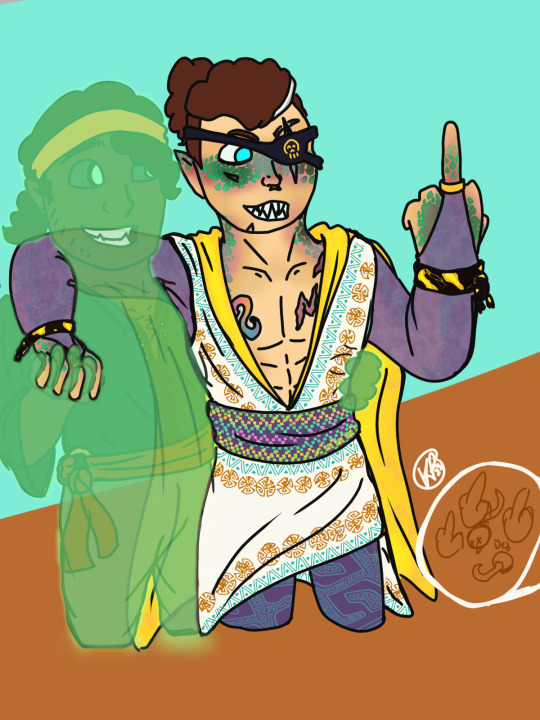
Happy pride y’all!! Have some skybound fanart for my au.
Essentially, most of the season is the same with only like 2 or 3 major changes.
1) Jay only saw the eyepatch and a small munchkin that turns out to be CJ (baby wu)
2) when they have that awkward sexist interview (w/ just cole, nya, and Jay) Cole actively came out as gay (he figures out the demi stuff later) to stop them from pestering nya about the love triangle, Jay fucking sneezes to interrupt and then asked her what taking on the preeminent single handedly and winning was like. They then answer all the sexist questions and shit (there’s some great fanfics about this that definitely inspired this; I’ll try to remember to link them somewhere) the reason they did this was because nya and Ronin had a talk with them (and dareth) after the whole commercial/make-up segment fiasco.
3) Jay’s parents (Ed and Edna; who fun fact are t4t and were both post op, so they couldn’t have biological kids) and culture growing up is heavily Persian/Pakistani inspired(bc the movie voice actor is from Pakistan im pretty sure). So he grew up hearing legends and tales about the djinn, and viewed them like fairytales or demigods. He had heard the tale of the vile Nadakhan the pirate king, but thought it was stupid to believe the stories were real. So he was more starstruck when he first saw nadakhan. And after being insecure about his financial status (mostly cuz he couldn’t afford to take his friends out to eat like that) it was easy for nadakhan to manipulate him into making the first wish that sent them down the same road as the og stories
4) Nadakhan kidnaps Jay instead of nya to be his bride, mostly cuz that’s who was grabbed, but also cuz Jay has stubbornly remained unbroken and he wanted to break him by being the reason he’s all powerful (or some shit like that)Either a cultural misunderstanding or bc he’s an asshole, nadakhan begins using feminine terms for Jay (she/her, and shit; his bigender awakening). The photo on the left has the wedding attire Jay wore.
5) god there was more of these than I thought. Anywhoodle, time doesn’t reverse, bc Jay is able to be hit with the venom and be fine (well ok he was feverish and sick for a couple days, but the Serpentine blood in his veins meant he was immune to most poisons). He wishes nadakhan to be mortal, and in the process is cursed by nadakhan to never die *and* to watch his loved ones die over and over again.
Hmmm…. I swear there was more I wanted to say, but for the life of me I can’t remember
Oh well 🤷
#fanart#ninjago fanart#ninjago cole#cole brookstone#ninjago jay#jay walker#skybound#season 6#ninjago au#bruiseshipping#liminal potential au#art of the void#that’s gonna be the tag I use on all my og shit from now on#I’m tired of wading through my reblogs
9 notes
·
View notes
Text
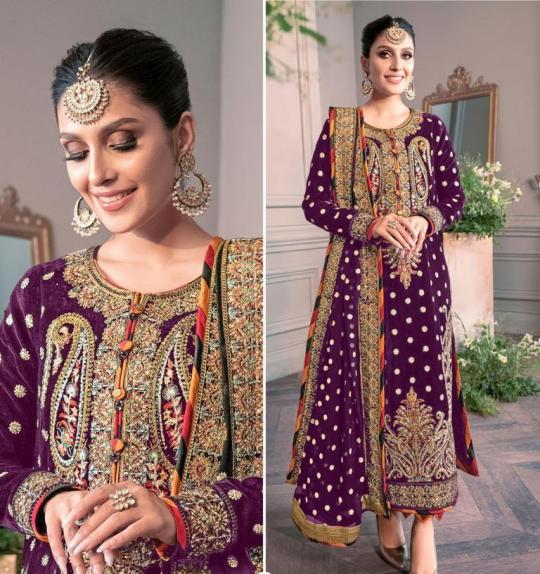
Make Eid 2024 special by wearing this gorgeous Eid dress made using georgette with embroidery. The bottom is made of santoon and it comes with nazmin dupatta with embroidery.
It can be stitched in all sizes small medium large and extra large. Minimum 28 inches to maximum 44 inches chest size.
0 notes
Text
Salwar Kameez: A Timeless Outfit for Every Occasion
Salwar Kameez is a traditional outfit for women that originated in South Asia and is worn in countries like India, Pakistan, and Bangladesh. The dress includes a long tunic top (kameez), loose-fitting pants (salwar), and a scarf or shawl (dupatta). It comes in various styles and designs ranging from simple and elegant to elaborate and heavily embroidered. If you want to purchase Salwar Kameez, there are many brands and designers that offer a variety of options, including Fabindia, Biba, W, and Manyavar, to name a few. However, Suti Vastra is a brand that specializes in high-quality Salwar Kameez with exquisite designs, premium fabrics, and attention to detail. They offer casual and formal Salwar Kameez in a wide range of colors, patterns, and styles to cater to your taste and budget.
The Salwar Kameez is a traditional outfit that has been worn by women in South Asia for centuries. It is a comfortable, elegant, and versatile attire that has become an integral part of South Asian fashion. The dress originated during the Mughal era, which was a period of great artistic and cultural influence in South Asia. Initially, it was worn by women in the Mughal court and was considered a symbol of royalty and elegance. Over time, it became popular among women of all classes and regions and evolved into a versatile and stylish outfit that is now worn by women worldwide.
There are different styles of Salwar Kameez available in the market.
Anarkali Suits
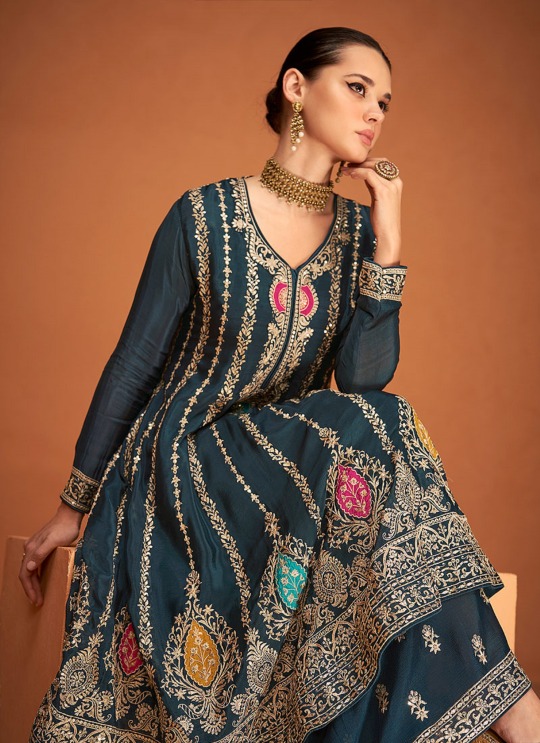
The Anarkali Salwar Kameez is a popular style that features a long, flowing tunic with a flared bottom that is reminiscent of the Mughal era. It is often paired with tight-fitting churidar pants and a dupatta.
Straight Suits

The Straight Cut Salwar Kameez, on the other hand, features a straight-cut tunic with no flare and is usually paired with loose-fitting salwar pants and a dupatta.
Palazzo Salwar Kameez is another style that features a tunic top paired with a wide-legged, loose-fitting pants called Palazzo, which is comfortable and trendy and can be worn for both casual and formal occasions and finally.
Pakistani Suits
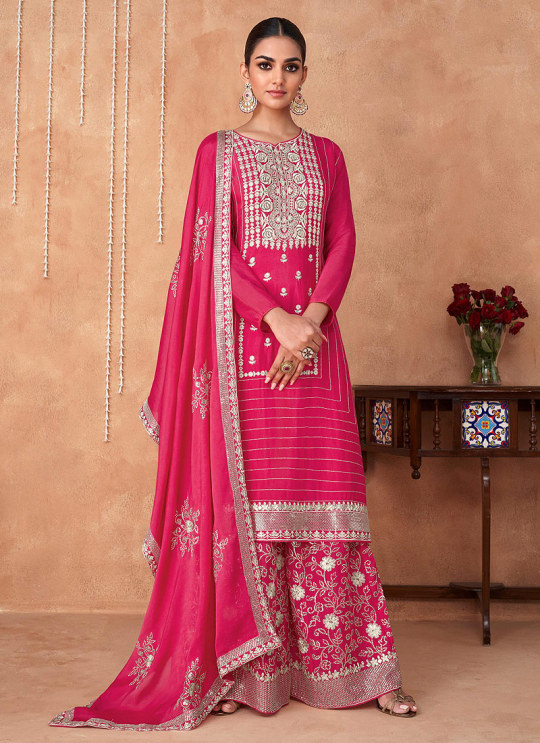
the Pakistani Salwar Kameez is a popular style in Pakistan that features a long tunic top paired with loose-fitting shalwar pants. The tunic is often heavily embroidered or embellished with sequins, beads, or stones.
Salwar Kameez is typically made of comfortable and breathable fabrics like cotton, silk, chiffon, georgette, and crepe.
The choice of fabric depends on the occasion and the season. For casual wear, cotton and linen are preferred as they are comfortable and easy to maintain. For formal occasions, silk, chiffon, and georgette are preferred as they have a more luxurious look and feel.
There are many benefits to wearing Salwar Kameez. It is comfortable to wear and easy to move around in, making it ideal for women who are looking for an outfit that is both stylish and comfortable. It is also versatile and can be dressed up or down depending on the occasion. Salwar Kameez can be accessorized with jewelry, bags, and shoes to create a personalized look. For South Asian women living abroad, Salwar Kameez is a way to stay connected to their cultural roots and express their identity. Finally, Salwar Kameez provides a modest option for women who prefer to cover up their arms and legs, making it ideal for those who want to dress conservatively without compromising on style.
When it comes to styling Salwar Kameez, it is essential to choose the right fit that flatters your body type.
2 notes
·
View notes
Text
I have a Persona 5 oc based within the world, and I'm really struggling to figure out a good design/aesthetic for his metaverse outfit. I've had a few ideas previously, but nothing that really matches his personality, his interests, and flows well with the other rebel outfits. I've researched a lot of metaverse outfits and ideas, (I run a Persona 5 role play server, and I help everyone else with theirs), and there's this idea that the metaverse outfit represents the users idea of a rebel. For example, Haru's is based off "rebels" of literature she might appreciate, daring stories like the three musketeers and Robin Hood. Ryuji's is based off that bad boy and punk stereotype he's gotten. I'd really appreciate some help developing him!
Here's some basic info on him. (Not everything is here cause I might change other things based on the aesthetic I choose)
Name: Zander
Ethnicity: South Asian/Japanese
Physical Appearance: Messy Black hair, Tan skin, glasses, brown eyes.
Arcana: Judgement
Ranged Weapon: Flare Gun
Affinities: Psychic and Gun
Persona: Houdini (Harry Houdini)
Persona Appearance: A large, thin, female humanoid monster wearing purple and black escape artist attire, surrounded by chains and purple smoke. (Is a woman for lore reasons)
Personality: Relaxed, calm, witty, head in the clouds, over-emotional, over-dramatic.
Occupation/Hobbies: He's a computer guy, doing coding, but his hobbies include graphic design and digital music
Backstory: (Taking Place between Futaba's Palace and Okumura's)
Zander’s mother was Japanese and his father was Pakistani, but he’s not really involved in the backstory. Anyway, his mother was a researcher working on an experimental drug. She worked on it with her associate, Eika Lyaire. Lyaire had a daughter about Zander’s age and the two were friends. Lyaire and his mother were close, but she was arrogant. During the final stages of the drug, which was supposed to help with insomnia, an argument broke out between the two women on who would get rights, and who to sell to. Zander was young at the time, so didn’t remember much, but Lyaire slipped some of the drug into his mother’s coffee before she left for the night. Because of it, she crashed her car that night and ended up dying on impact. Zander was also critically injured, but Lyaire’s daughter donated blood to him and he eventually survived. Zander was taken in by Lyaire, but was guilt-tripped every day of his life by her. Eventually, this weaker and more submissive Zander drew Lyaire’s daughter to be like her mother, and he basically became a slave for them, and eventually anyone. He assumed everyone around him was using him, but he deserved it. He did owe them. This led to him gaining a palace. A cult, where he was the false god that everyone took more and more from.
The Phantom Thieves got involved by a student who saw him acting strange on the Phan Site. They attempted to causally approach him as friends, just to get the palace information. When Zander found out about this, this made him very antagonistic toward them, until he accidentally stumbled into his own palace. Inside it, he was put to death by a shadow version of Lyaire, and his heart actually did stop the moments before he awakened. He then finished up the palace, learned the truth about his mother’s death, and Lyaire was subsequently arrested, and her daughter was horrified to learn the truth, begging for forgiveness
#persona 5#persona 5 oc#oc help#persona oc#persona oc help#character development#original character#original character help
3 notes
·
View notes
Note
hi!! this may be super random so im very sorry for that 🙏 but you’re the only desi blog i follow (that i know of) and so i was hoping to ask: i’m invited to an indian friend’s wedding and the dress code is desi wedding attire (obviously not strictly, i can wear a regular dress if i want but i’ve been to desi weddings before and its never fun to come in a plain dress when everyone is decked out in a beautiful salwar kameez 😭😭) anyway, i was hoping to find something for the wedding but I know alot of people get stuff from back home or go to a local shop that sells it specifically and neither are an option for me unfortunately so I was going to try online and i was wondering if you’d know any websites/brands/etc that might be worth looking into??
again, so sorry if this is completely random!!
hiiii anon!!!!!
i usually always buy from back home in pakistan (sorry i just prefer pakistani wedding wear more than indian 🤷♀️), and my fave pakistani brands would be:
khaadi.
maria b
gul ahmed
house of faiza
but do try websites like:
studio by tcs
janan
shein sometimes do really nice stuff too!
5 notes
·
View notes
Text
The Perfect Abaya Brands In Pakistan
The standard and spiritual attire of the Islamic world, the Abaya, has been gaining popularity and admiration worldwide. Pakistan, being a predominantly Muslim country, has a rich tradition of Best Abaya Brand in Pakistan and style on the subject of Abaya put on. In this article, we will discover the very best Abaya brands in Pakistan, along with their unique features, designs, and the place to buy for them.
1. HSY Couture:
Hussain Sheer's (HSY) eponymous label is a powerhouse on the earth of fashion. HSY Couture gives a spread of exquisite Abayas, each piece crafted with intricate particulars and modern designs. From sleek and easy to lavish and ornate, HSY Couture has an Abaya for every occasion. To browse their assortment, visit their web site at https://hussainsheer.com/.
2. Maria B:
Maria B, one of Pakistan's leading fashion designers, is known for her elegant and timeless designs. Her Abaya assortment is not any exception, providing a wide range of options that cater to completely different tastes and preferences. The Maria B webpage (https://www.mariab.com/) is the proper place to explore her Abaya collections and place an order.
3. Nomi Ansari:
Nomi Ansari's eponymous label is well-known for its vibrant and colorful Abayas. Her designs are a perfect blend of conventional and fashionable, making them a favorite among young and fashionable women. To buy her collections, visit the Nomi Ansari website at https://www.nomi-ansari.com/.
4. Hameed Haider:
Hameed Haider is a well-known title in the Pakistani fashion trade, providing a range of high-quality, luxurious Abayas. Their designs are inspired by conventional Islamic attire, with a modern twist. To explore their assortment, visit their web site at https://hameedhaider.com/.
5. Faraz Manan:
Faraz Manan is another renowned fashion designer in Pakistan, known for his glamorous and opulent designs. His Abaya assortment gives a variety of options, from elegant and understated to daring and dramatic. To shop Faraz Manan's Abayas, visit his webpage at https://farazmanan.com/.
6. Ayesha Hasan:
Ayesha Hasan's eponymous label is famous for its distinctive and trendy take on conventional Abaya wear. Her designs are perfect for the fashion-conscious lady who desires to make a press release together with her religious attire. To discover her collection, go to Ayesha Hasan's website at https://ayeshahasan.com/.
Conclusion:
Pakistan has a plethora of proficient designers and fashion homes that offer a variety of Abaya designs. Whether you are searching for a simple, understated Abaya or a lavish, ornate one, there is one thing for everyone. To stay up-to-date with the newest tendencies and types, keep an eye on the websites and social media pages of those famend Abaya manufacturers.
1 note
·
View note
